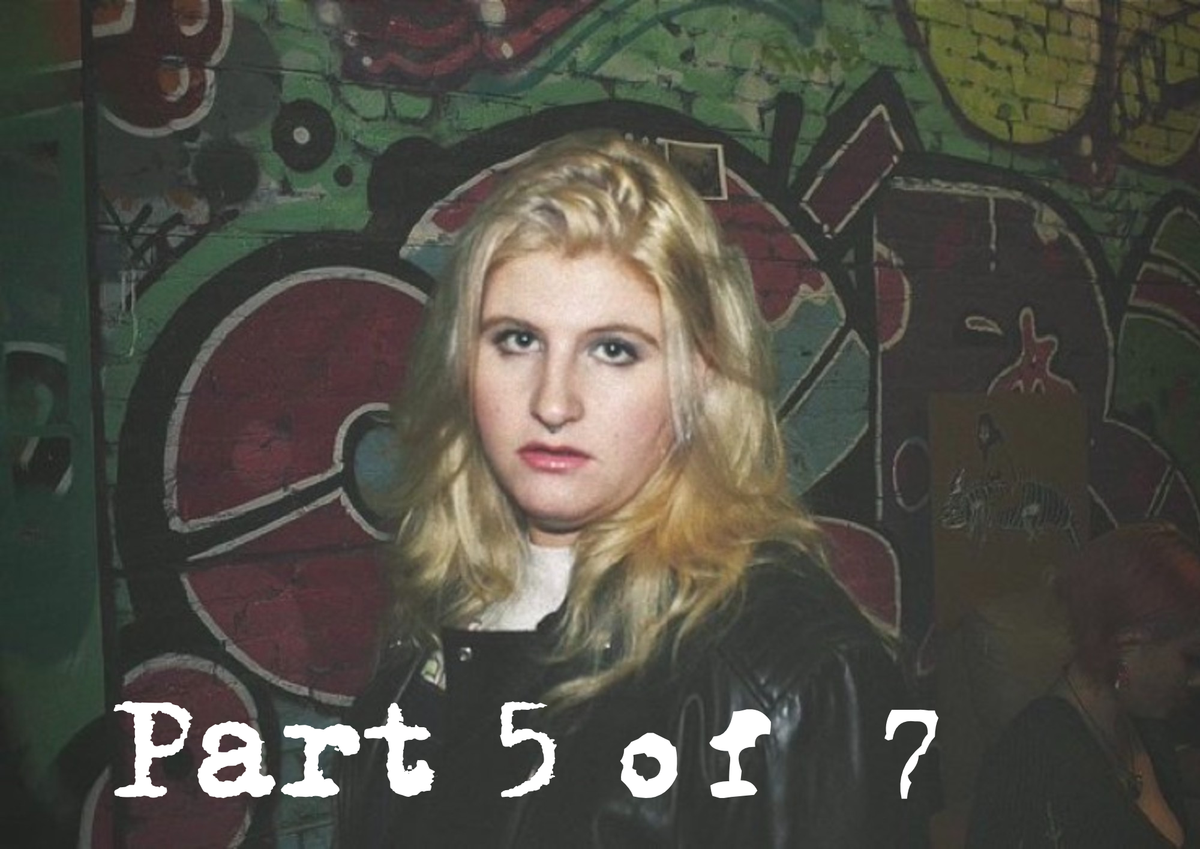14 Weird Questions With Louise Weard, Part 5 of 7
The filmmaker speaks to The Needle about trans culture and trans cinema in a long-form interview. This is The Needle's latest culture coverage.

The filmmaker speaks to The Needle about trans culture and trans cinema.
By Jane Migliara Brigham
One of the latest, (and as I have argued, one of the greatest) recent pieces of trans cinema is Louise Weard’s Castration Movie Anthology II. For The Needle’s culture coverage, I spoke to Weard at length about the film, what got her into film making, and other things.
Weard's director statement for the film opens with this paragraph.
“I sit with my co-producer co-star Dakota Blais with my Sony TRV330 pointed at my 720i Sony TV’s screen.
We are in the midst of filming the backing track to a scene that complements our characters’ prior moment together in the RV for Chapter 3 of Castration Movie.
On the TV, Trump signs executive orders one after the other for hours on end. I hurriedly ask Dakota to toss me another Hi8 tape.
A few minutes later, as co-producer co-star Aoife Josie Clements enters the apartment, we yell Shush! as we hear the words “Defending Women from Gender Ideology…” and I zoom the camera in on the pen.
Trump lets out a deflating “Oooo” and then everyone on TV is ushered out of the room. No fanfare or comment for the biggest rollback of transgender rights in the USA to date.
We watch this unfold knowing that our country will be soon to follow.
I wanted to ensure I had that moment, in its stark lived entirety, captured on camera to place exactly where we begin with the second half of Castration Movie as the narrative jumps forward a year later from the events of Part 1.”
To understand more surrounding the woman behind the film, this article is Part 5 (of 7) in The Needle’s series of articles called “14 Weird Questions with Louise Weard.”
In the style of her work, I have done the minimum amount of editing needed to immerse the reader in the conversation.
To view all parts of the interview, click below:
Full Interview Part 1 Part 2 Part 3 Part 4 Part 5 Part 6 Part 7
Question 9
Jane: I wrote this big review, and the subheader was "the horror of being perceived". it feel like a visceral part of the whole story. In part two you have everybody watching each other. It starts in the cult. You go outside and everybody's watching Circle to police her gender. You get a visceral sense of it because there's this camera which is obviously outdated. It draws attention to itself. I almost think the viewer is like part of the perceiving in the.
Louise: Yeah, 100%. I said this with part one, and it's even more true with part two, which is that the camera is the viewer is the camera, they're just not acknowledged. With part two, I had more fun with it. There's two moments like in part one where I look in the camera on purpose both during the last sex work scene, to kind of be like, oh, is this what you like watching? Making a quick gaze with the audience.
With part two, we pushed that harder. I directed Jamila Sondota, and said, hey, you are aware of the camera, and you will not hesitate to look down the viewfinder. I told her that she can look at the camera when it feels right for her, because you're aware of the fact that you're all being watched. There's a big quality of surveillance in part two, which I think is to comment on the first one having this undercurrent of a home video aesthetic that feels almost too intimate. And then the other moment is when they meet up with Brody the detransitioner, and they're walking into his apartment. He says excuse me to the camera, like we're bumping into the camera operator. Those little pieces are there to keep the audience immersed, and remind them of where they are.
Jane: I mean you open up on everybody's watching of everybody else, and you take that vision of it with you.
Louise: I think that it speaks to that idea of making a movie about the trans body. There’s the perception you're talking about which is like, I'm going to put the trans body so front and center on screen. My big question coming into this project was, how do I avoid the tourist gaze? I find so much work, even that produced by trans people, has this tourist gaze, which is to say, catering to a non-trans audience. Cis viewers give them a kind of framework to watch the trans body that's inspired by this historical representation that has an almost freak show quality. Yeah, like come look at the gender deviant. Even if it's sympathetic, it often has that quality of, oh, come look at this freak. But sometimes, it's like, oh, look at the poor freak. Other times, it's look at the freak freak.
This post is for paying members only
Subscribe now and have access to all our stories, enjoy exclusive content and stay up to date with constant updates.
Already a member? Sign in

